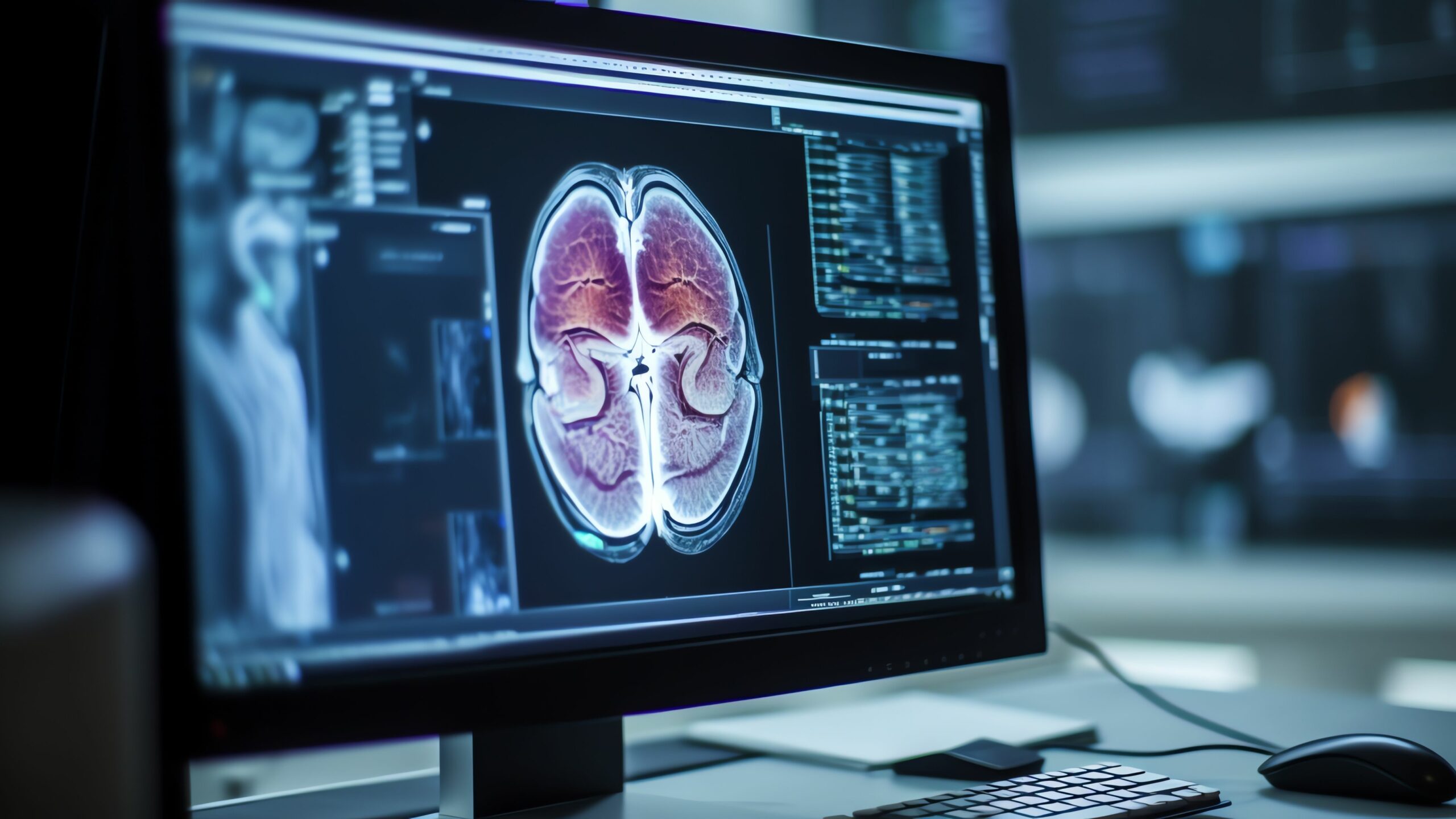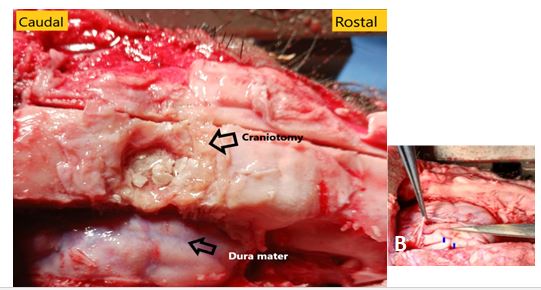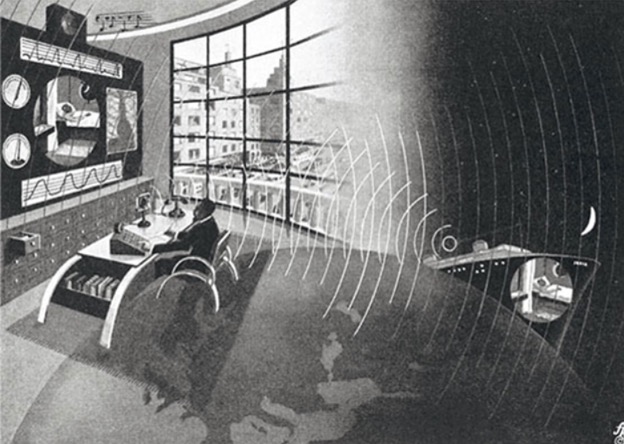
Traumatic brain injury (TBI) due to external mechanical force, including head injury due to concussion, motor vehicle accidents, falls, blast injuries, and penetrating brain trauma, is a leading cause of morbidity, disability, and mortality in all age groups. In the United States, every year ~2 million people suffer TBI with >3 million cases of TBI survivors experiencing neurological complications, psychosocial problems, and long-term disability. The current paradigm in TBI management and treatment hinges on protection of the neural elements from secondary injury. However, most of the clinical trials of TBI pharmaceutical agents for the treatment have been unsuccessful.
The Neurosurgery Research Initiative by Dr. David A. Connett, Acting Dean, COMP/COMP Northwest, established a research cluster to embark upon this challenging field to develop a novel treatment approach in the management of TBI, train and mentor medical students, clinical residents, pre- and postdoctoral fellows, and other investigators. This research cluster consists of expertise in neurosurgery, neuropsychiatry, neurobiology, neuroimmunology, large animal surgeries, and all aspects of histology, cell, molecular, and immunobiology. The overall motto of this cluster is: “In the pursuit of excellence in Clinical and Translational Research and Innovation, multidisciplinary approach involving expertise from clinicians and biological sciences without artificial barriers would expedite the successful implementation of research initiatives with fruitful outcome.” The development of such initiative by Dean Connett is aligned with the new strategic plan of President Farias-Eisner to develop research projects involving clinical and non-clinical scientists, generate new knowledge to benefit patients, and prepare grant applications and secure NIH and other extramural funding. This initiative of Dean Connett could indeed serve as a Poster Child of novel strategies to advance training, education, knowledge, and discoveries at WesternU. This will also strengthen the establishment and operation of a new Behavioral and Mental Health Center at WesternU.
The innovation includes the use of a novel technology based on the low energy continuous electromagnetic field (EMF) helmet with sensors and electromagnetic field (EMF) stimulation. The premise is that the transmission of EMF signal modulates brain neuronal circuit in the treatment and improvement of pathophysiological and psychological ramifications in TBI.
The innovation includes the use of helmets with sensors and electromagnetic field (EMF) stimulation. The pre-clinical studies involved the use of a clinically relevant swine model of TBI (Figure 1) since this model provides a translational platform due to the anatomical similarities of the swine brain to humans including, size, cytoarchitecture, (gyrencephalic compared to lissencephalic rodent brain) and the high ratio of white-to-gray matter >60% compared to <12% in case of rodent brain. All procedures are performed in a state-of-the-art operating room at WesternU fully equipped with anesthesia machine, imaging tools, and other required facility for large animal surgeries (Figure 2), measured physiological EMF before and after TBI induction via sensors attached to a helmet, administered therapeutic EMF by stimulation using the same helmet, recorded the anatomic, cognitive, and behavioral changes, collected blood and tissues for histomorphometric studies and examined biomarkers. The observed effects of EMF stimulation identified improvement in overall neurological recovery after TBI through reduction in the the neuroinflammatory changes that lead to increased intracranial pressure and resultant neuroinflammation and neurological deficits measured through EMF changes, histologically and serologically through biomarkers (Figure 3). This instills great hope for the future serving as a treatment and diagnostic modality for improving outcomes in patient care. The preliminary findings are the impetus for larger studies in experimental animals and humans to confirm the effects of EMF stimulation and investigate the underlying mechanisms at the cellular and molecular level.
Within last 8 months, great strides have already been made in the contribution to science by publishing many research articles (please see below the list of recent publications), and current development of two NIH R01 applications to submit soon and potentially a grant application to the Department of Defense.
Overall, electromagnetic therapy may hold promise as a novel non-invasive therapeutic strategy for brain trauma to reverse and restore the neurological function following TBI and pave the way for better management of patients.


Figure 2: State-of-the-art operative room with latest imaging and interventional tools at WesternU

Our Recent Publications: This list does not include the articles currently under publication
- Siddiqi I, Marino M, Agrawal DK, Baron D, Connett DA, Miulli D: Cellular mechanisms of electromagnetic field in traumatic brain injury.J Biotechnol Biomed. 2023; 6(2): 95-104. DOI:10.26502/jbb.2642-91280075; PMID:37388676 ;PMCID: PMC10310312
- Brazdzionis J, Radwan MM, Thankam FG, Mari YM, Baron, Connett DA, Agrawal DK, Miulli DE: A Swine Model of Neural Circuit Electromagnetic Fields: Effects of Immediate Electromagnetic Field Stimulation on Cortical Injury. Cureus15(8): e43774. DOI:https://doi.org/10.7759/cureus.43774
- Brazdzionis J, Radwan MM, Thankam FG, Lal MR, Baron D, Connett DA, Agrawal DK, Miulli DE: A Swine Model of Traumatic Brain Injury: Effects of Neuronally Generated Electromagnetic Fields and Electromagnetic Field Stimulation on Traumatic Brain Injury-Related Changes. Cereus2023; 15(7): e42544. DOI:https://doi.org/10.7759/cureus.42544; PMID:37637613; PMCID:PMC10460141
- Brazdzionis J, Radwan MM, Thankam FG, Lal MR, Baron D, Connett DA, Agrawal DK, Miulli DE: A swine model of changes in the neuronal electromagnetic field after traumatic brain injury: A pilot study. Cereus2023; 15(7): e41763. DOI:https://doi.org/10.759/cereus.41763: PMID:37575822; PMCID:PMC10416555
- Patchana T, Agrawal DK, Connett D, Baron D, Miulli D: Immunomodulatory effect of electromagnetic field in the treatment of traumatic brain injury.J Biotechnol Biomed. 2023; 6(1): 32-46; DOI:10.26502/jbb.2642-91280069; PMID: 36865683; PMCID:PMC9977325


